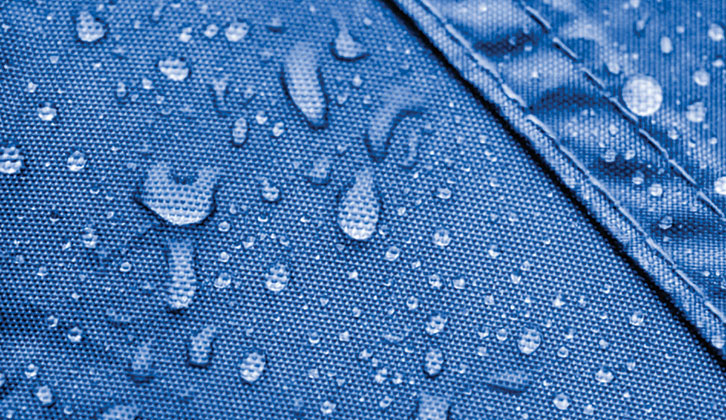Motorhome covers are available in a wide variety of shapes and styles, but all have one thing in common: when fitted and used properly, they should help protect your ’van for years to come.
Choosing one wisely is very important – the best motorhome cover can add years of life (and looks) to your vehicle, while others have the potential to damage it.
Selecting a suitable material is vital, as any cover that traps moisture on the surfaces of your motorhome for long periods may do more harm than good.
- Take a look at our guide to motorhoming on a budget for ideas on how you can save money on tour.
Are motorhome covers a good idea?
Most ‘vans spend at least half of the year standing dormant, particularly if you’re winterising a motorhome.
Wherever you settle on for motorhome storage, your ’van will deteriorate most rapidly when it is not in use. Moving parts can seize up, seals and sealant perish, finishes discolour and metal components corrode.
This degeneration is partly down to the weather, but it’s also a result of the effects of the UV radiation in sunlight. UV light can be highly damaging to motorhomes, causing cracking, flaking and chalking in plastic, rubber, glass fibre and paint finishes.
UV affects paintwork in two ways. UV-A dries out resins in the paint, causing it to shrink and crack, while UV-B attacks the pigments, resulting in fading and discoloration.
As well as protecting your vehicle from these adverse effects, a cover will safeguard your cherished ’van from the negative consequences of airborne contaminants, tree sap and bird droppings (which are damaging and can be tough to remove).

Regarding the vehicle interior, a cover shields furnishings and finishes from the fading effects of sunlight.
Covers can also provide a welcome additional layer of protection against physical attack by thieves. With a cover, opportunists can’t see inside, and if they do break in, they can’t see out either, which must be unnerving, even to the most brazen crook. This might just encourage them to move on and try elsewhere.
So not only will a cover save you days of elbow-grease and cleaning time over the lifetime of the ’van, it should also result in a higher residual value when you come to sell it on.
This is because by buying and using a good-quality cover, you are clearly demonstrating to any potential buyers that you’re the sort of person who really looks after their possessions.
The cover should have maintained your motorhome in the best possible condition – and you should always make sure to point this out to your prospective customers.
Together, these two factors could easily increase the sale price of your vehicle, to more than offset the original price of the cover. In this way, buying a good motorhome cover can be seen as an investment, rather than a cost.
Once you’ve settled on the one for you, you just need to put it your ‘van – that’s where our guide to how to fit a motorhome cover comes in.
What makes a good cover?
As with any other kind of product, you really do get what you pay for when you choose a cover.
Yes, very cheap options are available from the likes of eBay, and they might suffice, but if you have laid out large amounts of your hard-earned on the ’van, wouldn’t it be sensible to make a relatively small extra investment, by purchasing a top-quality, long-lasting cover to protect it?

Waterproof motorhome covers
Hydrostatic head is the scientific gauge measuring material ‘waterproofing’. Just imagine a column of water sitting on a piece of material – its height in millimetres, before any water seeps through the fabric, is the measure of how waterproof that material is.
Opinions vary somewhat as to what actually constitutes ‘waterproof’. The Ministry of Defence says that it’s under 1000mm, while some of the outdoor clothing manufacturers stipulate 4000mm (that’s 4m of water!).
Specialised Covers, for example, uses a material that provides a hydrostatic head of 2500mm, while Protec says 1000mm is more than enough for the worst the UK weather might do.

Of course, a large area of fabric may well be waterproof, but the minute you stitch a couple of panels together, you introduce potential weak spots along all the seams. The best covers feature minimal seaming, both to maximise the waterproofing and minimise the chance of any weak seam ripping.
In the case of Protec, its stitching is described as “twin-needle, lap seamed with bonded-nylon thread” for added strength and durability.
Breathability
The best covers also have a breathable membrane layer, which allows vapours to escape through the fabric.
This eliminates ‘sweating’ under the cover, preventing damp, mildew and mould. Of course, some heat is needed to make moisture vaporise. That’s not a problem in spring and summer, but even in winter, a dark cover might absorb enough heat on a sunny day to cause evaporation.
As with most things motorhome related, there is a compromise. In this case, it’s between waterproofing and breathability – as one increases, the other declines.
Soft liner
Plastic and painted motorhome finishes can easily lose their shiny appearance to the constant abrasion of a loose-fitting cover flapping in the wind. It therefore makes sense for the inner surface of the cover to be soft, to minimise this effect.
The best manufacturers have factored this in, with Specialised Covers saying its soft inner lining features the same technology as a baby’s nappy!
Strength and durability
The material in any motorhome cover needs tensile strength, plus elongation and tear resistance. This imbues it with the properties that are needed for it to carry out its job effectively for years. Investing in a better (more expensive) cover really will pay dividends in the longer term.
The fit of a cover
Custom-made covers are much better than universal ones, and almost always easier to use on your motorhome.
In one Trustpilot review, a purchaser complains that they don’t know what to do with the “spare foot of fabric, flapping around” on their universal-fit cover! If your budget dictates a cheaper option, take time to find the best fit.
Bespoke equipment
If you have a motorhome solar panel, air-con or satellite dish fitted to your ’van, you’ll need a custom cover to accommodate them – speak to suppliers to find out if this is offered.

Airflow
You don’t want your cover flapping around, but some airflow under and around the vehicle could help to facilitate the evaporation process.
Access
Another important factor to consider is that, if you will need to gain access to your motorhome’s interior while it’s in storage – perhaps for cleaning or maintenance purposes – you are going to require a cover that is fitted with a quick-release door flap, which allows for easy entrance and exit.

The better manufacturers build these into their covers as a matter of course, and they are simply secured with zips or hook-and-loop tape.
Budget
For a decent full cover, you’ll be looking at a cost of up to £500 – cheaper options are available.
Delivery time
Currently, it looks as though you’ll be waiting anything from two to 12 weeks if you decide to go for a custom-made motorhome cover. You should be able to get a universal cover from an online store in a week or less.
Warranty
Almost all of these products will have a one-year warranty, but do take care if your cover is being imported from abroad. Covers made by the main British firms typically have a one-year warranty for manufacturing, and a three-year warranty on the fabric.
- Before you set off on tour, there are some important pre-departure checks to carry out, as John Sootheran, Dave Newell and Peter Rosenthal explain.
If you’ve enjoyed reading this article, why not get the latest news, reviews and features delivered direct to your door or inbox every month. Take advantage of our brilliant Practical Motorhome magazine SUBSCRIBERS’ OFFER and SIGN UP TO OUR NEWSLETTER for regular weekly updates on all things motorhome related.









